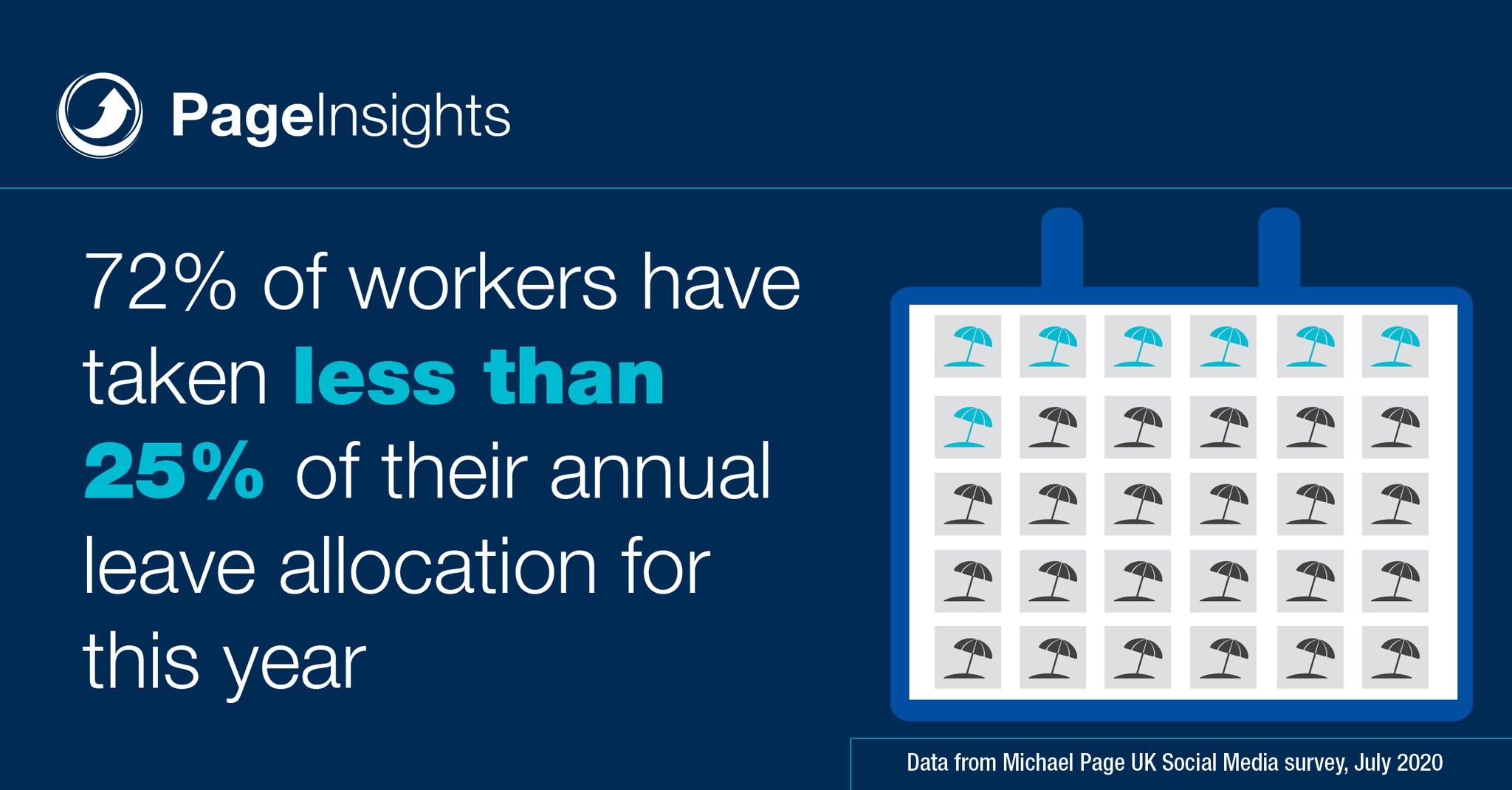Talent Trends 2025
Gain a competitive hiring advantage by learning what top talent wants.


It has long been acknowledged that failing to take time off work can have dire consequences for any individual, leading to heightened stress, a loss of productivity, and eventually, burnout. However, a culture of presenteeism can also be bad news for employers too – and this has been particularly pertinent during the pandemic.
With opportunities for a holiday scarce under lockdown conditions, many employees have chosen to ‘bank’ their annual leave entitlement for later in the year. Whilst there might be a certain level of logic to this from an individual point of view, it has left many organisations with a resourcing conundrum for the second half of the year. Many are now faced with a stark choice between allowing an abnormally high number of people to take annual leave in a compressed period of time, or deny staff a holiday to keep operations running.
To delve deeper in the situation, we conducted a survey* in July 2020 – the mid-point for many people’s holiday year - where we asked workers about how much of their annual leave allocation they had taken so far. The results were fascinating, with 72% saying that they had taken less than 25% of their holiday entitlement and only 19% stating they had taken up to half of their holiday entitlement. Finally, 5% took up to 50-75% of their holiday and just 4% fell within the 75%-100% bracket.

Holiday entitlement in England and Wales is regulated by the Working Time Regulations 1998 (WTR). Under this rule, employers must allow their employees the chance to take a holiday and employees are expected to use their four weeks’ leave entitlement in the year in which it is due. Not taking it presents a problem whereby that leave entitlement will be lost. However, leave can be carried forward into the following year if it has been agreed.
SMEs, with fewer resources and smaller staff numbers, are most at risk of being severely disrupted if staff fail to take their entitled leave. With a large number of staff away from work at the same time, resulting in low staffing levels, customer supply lines can be affected and profit margins reduced. Yet, this process has to be conducted in the right way, because forcing staff to take holiday entitlement when they are not ready to can often breed discontent within a business.
It is important that companies are proactive in implementing their annual leave strategy during the crisis by reminding staff to use their allowance. Although, there is some relief in the wake of the pandemic from the Government’s announcement which relaxes the rule, allowing employers to carry over of annual leave into the next two years. But this is only for those working in key industries, such as healthcare, the food industry and supply chains. Professionals outside of these industries face a huge challenge to prevent a downturn in productivity towards the end of the year.
To get more insight into the issues around annual leave entitlement during the pandemic, we spoke to our internal HR experts for their advice. “Many organisations at the beginning of the pandemic took a structured approach to ensure employees were taking annual leave. If anything, to eliminate any future staffing problems,” they explained. “Organisations were asking employees to ensure they had taken any accrued leave-to-date. We also saw employees waiting to cancel leave if their holidays abroad could no longer go ahead. However, there were some organisations that took the decision to not allow those cancellations.” Our experts added: “There were missed opportunities for those on furlough leave too. They could have taken annual leave and be paid a full salary for days they were taking as leave, whilst on furlough."
It is clear that in terms of carrying over annual leave, businesses will now need to adopt a ‘use or lose it’ approach. Or look to provide additional options for carry over of leave entitlement.
That being said, both of these options run the risk of either prolonging the problem into the following year, or creating resentment if employees feel they are burnt out and have not had the opportunity to take annual leave due to increased workload. Whilst colleagues that have been on furlough could face losing their leave entitlement or having it declined.
Employers must begin to strategise a staggered approach for those workers that sit outside of the key groups, while maintaining productivity levels and expectations. It has been a challenging few months in which many have had to combat the pandemic by shifting priorities and being adaptable. Undoubtedly, this has had a knock-on effect with staff and job opportunities across the UK, but as employment strategies continue to be re-defined a sustainable strategy needs to be put in place.
Two scenarios now emerge. Businesses that have weathered the storm will be keen to maintain consistent staffing numbers to carry them into the New Year as they strive to make up the financial shortfall. But they may need to make strategic changes. While businesses that have had to reduce their staffing levels to survive the lockdown may now be seeking temp or specialist hires.
We can help you kick-start your revival with our vast network and market insights. If you would like any more information, or to find out how we can support you at this time, please get in touch.
* Market data and insights source: Michael Page LinkedIn Survey, July 2020. Completed by 820 professionals.
Gain a competitive hiring advantage by learning what top talent wants.